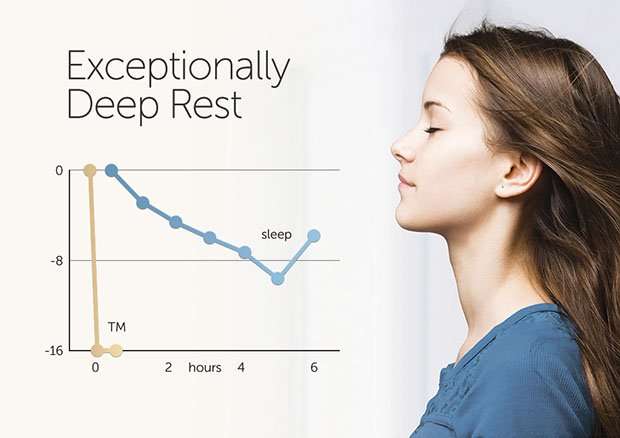“The Bhagavad-Gītā gives a very clear exposition of the path of enlightenment, Transcendental Meditation, and claims that there is no obstacle to it, there is no hurdle on the way. Even a slight practice relieves man of great fears.” — Maharishi Mahesh Yogi, Science of Being and Art of Living
I grew up in a working-class town on the outskirts of Glasgow, Scotland.
It was a very stressful environment. There was a lot of unemployment and heavy drinking. You could feel the insecurity and anxiety in the air.
The pressure on my parents to put food on the table and keep a roof above our heads was immense. This meant they had little, if any time and energy to provide emotional nurturing for me. Consequently, I grew up with very little confidence and self-esteem.
In my journey in recovery I’ve realized that I was suffering from what the addiction counsellor John Bradshaw calls ‘toxic shame.’ He describes it as a deep-down feeling of ‘not being good enough, of not being deserving and of being inherently flawed’ which manifested in me as low self-confidence, low self-esteem and a fear of people, places and things.
I just did not feel good about myself in any way.
When I was a teenager I discovered that alcohol could provide relief. It could take away my fear of people, bolster my self-esteem and make me feel good in my skin. In my early twenties, I added cannabis, amphetamine, ecstasy, acid and occasionally cocaine to the mix.
My drug of choice was alcohol. Alcohol first and if I was feeling flush I would add the other drugs.
Luckily, in my early twenties I had what I now know to be an alcoholic moment of clarity. Somehow, I knew that if I carried on the way I was going I would not make it till my 30th birthday.
I had been addicted to alcohol and drugs for 14 years, constantly feeling physically and mentally drained, depressed, anxious and unwell. Prior to my journey into alcohol and drug addiction I was a very active sporty kid so I knew what it was like to feel good. I knew there had to be another way.
On the road to recovery
In my early twenties I started my road to recovery from alcoholism by embarking on the Alcoholics Anonymous (AA) 12 step program. As of today, I am 24 years sober.
About four years ago a mate of mine, a fellow alcoholic, mentioned he had started doing Transcendental Meditation (TM). I did not pay much attention to it as I was already using guided meditation techniques as part of the Step 11 of the AA program: ‘Sought through prayer and meditation to improve our conscious contact with God as we understood Him, praying only for knowledge of His will for us and the power to carry that out.’
But at one point I somehow discovered that John Hagelin was a TM’er. My friends and I were big fans of the film What the Bleep Do We Know!? and were mightily impressed by John Hagelin who was featured in it. I thought if the practice was good enough for John Hagelin then I need to give TM a go.
Finally feeling rested
So, three years ago I learned Transcendental Meditation from Angela Landers in the Glasgow TM Centre.
My first dive blew me away. I have never felt so rested in all my life. On the train journey back home I felt so relaxed I would not have fussed if I carried on past my stop.
I had always been a poor sleeper and the most immediate benefit, and the hook that kept me disciplined, was the rest and rejuvenation I felt after my morning TM session. It did not matter how poor my sleep was the night before I always had my morning TM session safety net. Needless to say, after three years of practicing TM my sleep has improved no end.
Putting the brakes on the ‘racing brain’
Another immediate benefit of TM, from an addiction recovery perspective, was the slowing down of what we call in Glasgow a ‘racing brain’.
Bob Roth talks about the “gotta, gotta, gotta, gotta, gotta” mind: “I gotta do this and I gotta do that, I gotta make a list and I gotta find the list and I gotta slow down and I gotta get going and I gotta get to sleep and I gotta wake up.”
The ‘racing brain’ is the high anxiety version of that. The ‘racing brain’ goes at a 100mph and almost completely consists of anxious catastrophic thinking.
With meditation, the energy of that anxious catastrophic ‘racing brain’ is now channelled into creativity both in my personal and professional life.
“… relieves man of great fears”
The line from the Science of Being and Art of Living that really resonates with me at the moment is, ‘Even a slight practice relieves man of great fears’.
Early in my TM journey this was so noticeably true it was quite astonishing. I would be anxious and fearful about something or someone or some event and I would do my TM practice and come out from it rested and full of energy. My ‘great fears’ would have evaporated to the point where I had forgotten about what was giving me so much grief in the first place.
The missing piece of the recovery puzzle
AA had helped me enormously with abstaining from alcohol. It gave me a safe place to go where I could talk about my fears and problems and where I could be surrounded with like-minded people. But on a day to day basis I was still having problems with anxiety. I was trying to use guided meditations but they typically took 30 minutes to complete and were difficult to fit in. They also often felt like a chore, something I had to do, so invariably I skipped them.
Looking back, I think they may have actually added to my anxiety as I would often berate myself for not maintaining complete focus during the entire half an hour session.
With TM my mind can wander during meditation and it’s alright. I can’t stress enough how important that fact is. I was someone who had very fixed ideas on what meditation was all about: maintaining a laser-like focus on the subject I was meditating on. As I have subsequently found out by listening to Maharishi Mahesh Yogi, this is nigh impossible.
Now meditation is no longer a chore for me, something I have to do but something I look forward to doing daily because I enjoy it. It also helps that TM is “portable”. I’ve meditated on trains, planes, ships, and even when I am out walking in the hills.
If you do the 4%…
There is a phrase that is bandied about in recovery that goes along the lines: “If you do the 1%, 2%, 3% (put your own figure in) then God will do the rest.”
Well the engineer in me (I studied engineering at the University of Glasgow) wanted to know what the exact percentage was and, for me, I reckon I’ve found it.
It’s 4%.
24 hours a day, 8 hours asleep, 16 hours active. Two times 20 minutes per day of TM gives you 40 minutes and 40 minutes of a 16 hour workday is 4%. If only for the benefits I listed above, and there are many more benefits that I have not mentioned here, it’s not a bad return on investment for the 4% of my daily time.
— John G., from Scotland
(full name of the author is known to TMHome.com)
















